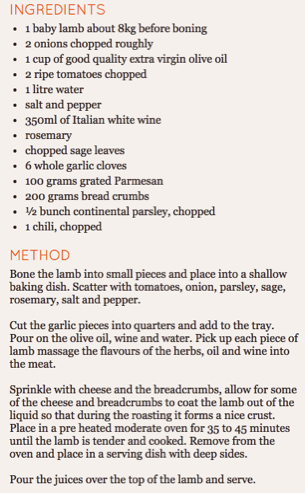Dr. Utr. Iur.
Frank
Van den Broeke

To book an authorised guided tour with me: .... Click here
Wine & Dine: ... Click here
Where to buy your tickets ... ? Click here
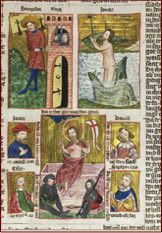

A preliminary word about this article.
It is scandalous that hardly anyone is visiting this section. I have to admit, it is not always fully open, but for those who want to understand the history of Christianity and it's iconography, it is a must to visit it. You will find here the most beautiful tombstones and sarcophagus' of the catacombs.
It also explains how an initial movement became the established Roman Catholic Church. With little inserts during the story, I will try to explain the spiritual meaning of the many animals .... and for making it a bit fun, also some ancient recipes of how to cook them in your kitchen. Enjoy the lecture from the beginning until ... yes indeed: Michelangelo.
The Pio Christiano Museum
We are on the Vatican Hill. This hill has nothing to do with the seven hill on which Romulus and Remus started the city on April 21st, 753 BC. On this hill, Agrippina the Younger, the beloved mother of the emperor Nero, had a villa. And we have to tell you the story of Nero and Agrippina, because it was during the persecutions of Nero that St. Peter, the successor of Jesus died and he was buried beneath the villa, where was originally a little circus of her brother, the emperor Caligola. Nero, once being emperor, enlarged it, and the obelisque that we have today on Saint Peter's Square is coming from his circus.

In the near were a few cemeteries or necropolis. It is possible to visit the necropolis at the Via Triomphalis, booking it over the official website of the Vatican. This one was founded back in 1956 when the Vatican created a parking in the hill. It was opened to the public in December 2013. It's what we are calling a (mostly) pagan necropolis. One of the famous people buried there is the libertas (and very wealthy) ex-slave of Nero and also the one of Anselmus, a set designer from the Theater of Pompey in the time of Nero. The excavations have revealed more than 1000 graves. It is unique how it was extremely well preserved by landslides over the history. It's not a necropolis of the very wealthy citizens of Rome, but mostly of common people, laborers and middle class dating from the 1st centrury until the time of Constantine (320 DC)
Necropolis Via Triomphalis + reconstruction
Copyright © Vatican Museums All Rights Reserved
The second, and far more famous, is the cemetery underneath the St. Peter's Basilica: the so-called Scavi. Also those you can visit (daily) by booking over the official website of the Vatican.
The historical truth of the Tomb of Saint Peter was the fundamental archeological work of Margherita Guarducci since 1952, and was published in 1967 when pope Paulus VI announced that the bones of saint Peter were found.
(for more info: go to my article: 2000 years of papal history)
Pope Francis I displayed them to the public for the first time on November 24, 2013.


They found a necropolis , an ancient and vast cemetery , which ran from east to west and was parallel to the Circus of Nero. What was under the altar looked like a Chinese box. Under the papal altar , which is the current altar of Clement VIII (1594) , was found another of Callisto II (1123 ); inside the altar of Callistus II was found the altar of Gregory the Great ( 590-604 ); the altar of Gregory the Great , in turn , rested on top of a monument that was built even before Constantine erected the basilica on the site of the tomb of Peter, and this Constantine monument can be dated between 321 and the 326 . This monument of Constantine included an ancient monument , which dated to the second century , the first monument of Peter. This was built over a simple stone with the graffiti “Petrus eni -Πέτρος είνι”, “Peter is inside”. Many more graffiti proved the veneration of this tomb from the beginning. The bones found inside are of an old strong male and dating 1950 years back, and there were missing his feet.
The tradition told us that saint Peter was martyred in Rome under the persecution of Nero and was buried nearby the circus of Caligula and Nero. Constantine in the 4th built the early Basilica over it. Most of the churches are build to the east where the sun rises. An allegory of the resurrection. But the Constantine Basilica is said to be build to the West, over the tomb of the “protos”, the first of the Apostles, who lays in his tomb and looks at the East. That explains also why the altar and baldachin of Bernini are not centered under the dome. They are centered over the tomb of saint Peter. Pius XII, newly elected Pope in 1939 , wanted to open the vaults of the Vatican basilica science and seek an answer to the age-old question about the historical truth.
St. Peter, who died on his own wish on the cross upside down (a death for the most infamous), Roman soldiers wouldn't bothered to unwind the feet of St. Peter after his death, but just cut him loose from the cross with there swords.
And why was the text in Greek? In those days the imperial court didn't spoke Latin at home, but the more refined language of of what was considered the superior culture. Also the letters of St. Paul and the gospels are written in Greek. By convincing through the language the upper-upper class of the population, the message spread quickly around. This explains also the rich decorated tombs that surround the simple grave of St. Peter. Just the same as in the beginning of the 20th century the common language of the European courts was French.
An assortment of bones linked to the Apostle Peter is laid out in an image from the Vatican's Fabbrica di San Pietro.
Pope Francis I displayed them to the public for the first time on November 24, 2013.
All the catacombs and/or necropolis were outside the walls of the city of Rome, the most famous on the Appian Way. In the year 609, the population of Rome became so small that there was no way to protect the remains of saints and martyrs. So, pope Boniface IV, who had received the Pantheon of the emperor Phocas of Byzantium, decided to remove them and to get them reburied in the Pantheon. This happened on the 13 May 609.
"Another Pope, Boniface, asked the same [Emperor Phocas, in Constantinople] to order that in the old temple called the Pantheon, after the pagan filth was removed, a church should be made, to the holy virgin Mary and all the martyrs, so that the commemoration of the saints would take place henceforth where not gods but demons were formerly worshipped."
John the Deacon, Monumenta Germaniae Historia (1848) 7.8.20, quoted in MacDonald 1976, p. 139

But why after the reburial of their remains should you go in pilgrimage to the catacombs? And so it happened that the memory of their existence got mostly lost (with exception of the one of saint Sebastian, because a basilica was build over the entrance.) Accidentally, they were rediscovered in 1578 by Antonio Bosio. Professional excavations had to wait until Giovanni Battista de Rossi when the catacombs of saint Callisto were found back in 1854.
Visiting them today, it gives you an impressive idea how enormous those underground burial places were. Missing are the tombstones and the sarcophagus'. Under Pius IX, most of them went to the Vatican Museums and it was pope Paulus VI, who added a new wing to the Museums called the Pius Christian Museum.
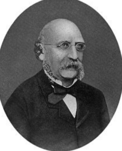
The Biblia Pauperum was the way how in the medieval they connected old and new testament. Everything in the old testament was a prophecy of the New. The Cycle of frescoes on the lower level in the Sistine Chapel is actually nothing more than a modern version of it.
In a similar way, the stories told on the tombs and the sarcohpagus in the Vatican are doing the same: it is a Biblia Pauperum - a visual bible for the poor.
The Pius-Christian Museum
In my article about the emperor Nero, it emerge that he didn't really persecuted Christians. The name even didn't exist !!
Nero, who had as schoolmate the grandson of Herod the Great and as tutor Seneca, asked him for help to rebuild the city after the fire in 64 AD. The grandson, called Herod Agrippa, after the son in law of Octavianus Augustus, was intriguing already years during his stay at the imperial court in Rome and taking advance of Nero’s madness for creating a pan-Judaic movement with more autonomy from Rome and from which he, Herod Agrippa, would be the new messiah (being a "Christian" derives from the Greek Septuagint, Christos was used to translate the Hebrew מָשִׁיחַ (Mašíaḥ, messiah), meaning "[one who is] anointed.
When Nero asked him where he could find “Bob the Builder”, Herod saw it as his opportunity to get rid of the competition in Judea. Already 30 yrs he had the competition of an other messiah: a certain Jesus of Nazareth. Where the followers of Jesus not those who went in the streets and told the blind: “in the name of the Lord, you can see again, you can walk again etc.” They even spoke about resurrection. But that wasn’t the worst!! Those early followers of Jesus had also the reputation of being cannibals !! Didn’t they gathered often together for eating the body of Christ and drinking his bled ?! Now, you can imagine that Nero, schizophrenic, heard that there were magicians in the city who were also cannibals, had no problem to persecute them. And so, Herod Agrippa, the grandson of Herod the Great, convinced the emperor Nero to persecute them, and to reduce them to slavery, in order to put them to the job of rebuilding the city. He managed to do so by the nickname the early Christians had in Rome: Taumaturgus, θαυματοποιός, the Greek word for a miracle worker, illusionist, magician or conjurer ... in the tombs below in the Pius Christian Museum of the Vatican, we show you some examples. And that was the first persecution. Not of Christians, but of magicians and cannibals. An interesting article about accusations of cannibalism of Christians appeared in www.academia.edu. Read also the interesting article: Christianity and the Roman Empire.
During the persecutions, the ordinary people were put to rebuild the city and the golden house of Nero, but the heads of that movement were killed. Among them St. Peter and St. Paul. Many more died also on the stake in the circus of Nero, located beneath the Villa of Agrippina, his beloved mother, today the "ager Vaticanus", where was the circus of Nero, after he enlarged the circus of Caligula that was there before. And the obelisque on Saint Peter's Square is the one commissioned in Egypt by Nero for his circus.
We start our journey in the Pius Christian museum at the very end of the gallery where is the bronze bust of Giovanni Battista de Rossi, the archaeologist who in the 19th century for the first time scientifically described the catacombs. Nearby, we have the beautiful little statue of Jesus as the good Shepherd. (read the taught of Pope Benedict XVI)
The statue is surrounded by a lot of wall stones, some of them with twelve sheep, representing the twelve apostles.

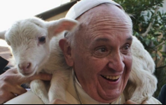
The lamb is portrayed many ways: with a halo; in a victory wreath; carrying a banner of victory; seated on a book with seven seals; or standing on a hill with four streams of water flowing from it, representing the four Gospels.
Jezus, dressed as a young shepherd who holds a lamb on the shoulder. It was founded back in the Catacombs of San Callisto on the Appian Way. The care of a shepherd over his flock is referred to as illustrating God’s care over his people (Psalms 23:1,2; 74:1; 77:20; Isaiah 40:11; 53:6; John 10:1-5, 7-16).
Also, very often Jesus is referred as to the Agnus Dei, the Lamb of God. (John, 1:29) In the symbolical language of Scripture the lamb is the type of meekness and innocence (Isaiah 11:6; 65:25; Luke 10:3; John 21:15).
The lamb was a symbol of Christ (Genesis 4:4; Exodus 12:3; 29:38; Isaiah 16:1; 53:7; John 1:36; Rev. 13:8). Christ is called the Lamb of God (John 1:29, 36), as the great sacrifice of which the former sacrifices were only types (Numbers 6:12; Leviticus 14:12-17; Isaiah 53:7; 1 Corinthians 5:7).
Therefore, we have in a lot of tombs the image of Abraham and the sacrifice of his son (and just before it happened, the hand of the Lord stopped him of doing the act. The obedient act of Abraham, not to sacrifice the lamb, but his own son found its fulfilling in the sacrifice act of Jezus on the cross. What God didn't ask Abraham, he asked his own Son on the cross. The sacrificial lamb it symbolizes atonement (forgiveness) from sins.


Beautiful is the mosaic in the abside of the church San Clemens in Rome: Jesus, on the cross, emerging of foliage of acanthus (symbol of eternal life). Underneath, four rivers are floating water (the living water of the four gospels) to the twelve apostles or to the twelve tribes of Israel, or the whole world, the Church. The same idea behind the fountain of the four rivers of Piazza Navona, made by Bernini, made at the same time that Borromini made the palazzo Propaganda Fidei, the institute of the world-wide missionary activity of the Catholic Church.
The same image you will find back already in the catacombs as showed here on the left.

But let's walk on in the gallery Pio Christiano and on the right, after the section of the good shepherd, we have a beautiful, but very complex stone. First the overview, and then we go in detail
1 'In all truth I tell you, anyone who does not enter the sheepfold through the gate, but climbs in some other way, is a thief and a bandit.
2 He who enters through the gate is the shepherd of the flock;
3 the gatekeeper lets him in, the sheep hear his voice, one by one he calls his own sheep and leads them out.
4 When he has brought out all those that are his, he goes ahead of them, and the sheep follow because they know his voice.
5 They will never follow a stranger, but will run away from him because they do not recognise the voice of strangers.'
6 Jesus told them this parable but they failed to understand what he was saying to them.
7 So Jesus spoke to them again: In all truth I tell you, I am the gate of the sheepfold.
8 All who have come before me are thieves and bandits, but the sheep took no notice of them.
9 I am the gate. Anyone who enters through me will be safe: such a one will go in and out and will find pasture.
10 The thief comes only to steal and kill and destroy. I have come so that they may have life and have it to the full.
11 I am the good shepherd: the good shepherd lays down his life for his sheep.
12 The hired man, since he is not the shepherd and the sheep do not belong to him, abandons the sheep as soon as he sees a wolf coming, and runs away, and then the wolf attacks and scatters the sheep;
13 he runs away because he is only a hired man and has no concern for the sheep.
14 I am the good shepherd; I know my own and my own know me,
15 just as the Father knows me and I know the Father; and I lay down my life for my sheep.
16 And there are other sheep I have that are not of this fold, and I must lead these too. They too will listen to my voice, and there will be only one flock, one shepherd.
Our Cooking-class:
take a look at my weblog Wine&Dine for finding good locations to eat in Rome at decent prices.
Before all ... an introduction where I took my inspiration..... and it was no one less than Leonardo da Vinci and a shopping list of Michelangelo. Lets start with what Leonardo would have called a healthy diet. It could be written by an expensive dietist today. Enjoy your reading .... and maybe you will try one of the recipes of those days and even of the Roman time in your own kitchen.
Food was very often part of the liturgical year: Lamb on Easter, fish on Fridays aso. I will try to offer you some recipes from the Roman time to the Renaissance.
A lot of my recipes you can find in the Vatican Museum in the library: the famous cooking book of MARCUS GAVIUS APICIUS: DE RE COQUINARIA, The Vatican Codex, Apiciana, II. The translation in English is by The Project Gutenberg eBook of Apicius: Cookery and Dining in Imperial Rome, by Joseph Dommers Vehling.

If you want to be healthy observe this regime.
Do not eat when you have no appetite and dine lightly,
Chew well, and whatever you take into you
Should be well-cooked and of simple ingredients.
He who takes medicine is ill advised
Beware anger and avoid stuffy air.
Stay standing a while when you get up from a meal.
Make sure you do not sleep at midday.
Let your wine be mixed with water, take little at a time
Not between meals, nor on an empty stomach.
Neither delay nor prolong your visit to the toilet.
If you take exercise, let it not be too strenuous.
Do not lie with your stomach upward and your head
Downward. Be well covered at night,
And rest your head and keep your mind cheerful.
Avoid wantonness and keep to this diet.
Leonardo da Vinci, 1515 (reprinted from Dave Dewitt’s Da Vinci’s Kitchen: A Secret History of Italian Cuisine)
You can't imagine yourselve an Easter meal without Abbachio alla Romana: roasted lamb in the Roman Way. (today cooking)
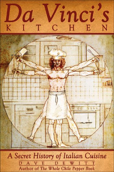

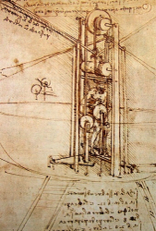
Leonardo Da Vinci
Giant Whisk, blender
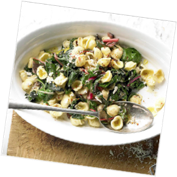

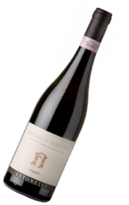
ALITER BAEDINAM SIVE AGNINAM EXCALDATAM
(Steamed Lamb) (ancient roman cooking)
(Apic. 8, 6, 2)
Ingredients:
------------
10 lamb cutlets
1 l white wine
100ml oil
2 big onions, diced
2 tblsp ground coriander
1 tsp ground pepper
1 tblsp Liebstoeckl
1 tsp ground cumin
200ml Liquamen (or 2 tsp salt)
Instructions:
-------------
Put cutlets into pot, together with diced
onion and spices. Add Liquamen, oil and wine.
Cook 45-60 minutes.
Pour sauce into a pan and thicken it with starch.
Serve cutlets together with the sauce.
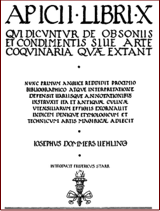
Who was Apicius? This is the surname of several renowned gastronomes of old Rome. There are many references and anecdotes in ancient literature to men bearing this name. Two Apicii have definitely been accounted for. The older one, Marcus A. lived at the time of Sulla about 100 B.C. The man we are most interested in, M. Gabius Apicius, lived under Augustus and Tiberius, 80 B.C. to A.D. 40. However, both these men had a reputation for their good table.
Pope Nicholas V commissioned Enoche of Ascoli to acquire old manuscripts in Germany. Enoche used as a guide a list of works based upon observations by Poggio in Germany in 1417, listing the Apicius of Fulda. Enoche acquired the Fulda Apicius. He died in October or November, 1457. On December 10th of that year, so we know, Giovanni de’Medici requested Stefano de’Nardini, Governor of Ancona, to procure for him from Enoche’s estate either in copy or in the original the book, entitled, Appicius de re quoquinaria (cf. No. 3, Apiciana)
Here the first recipe by Marcus Gavius Apicius.
Which each recipe I bring you further in the art of the eating habbits of the ancient Romans ....
I hope you like his recipes, but never forget:
"de gustibus, coloribus, mulieribus non disputandim"
"We will not discuss taste, colors or women!"



Central in the stone we have the story of Noah and the ark. Probably one of the best known stories world wide by movies, like the one in 2014 with Russell Crowe as Noah, doom thinkers who build one claiming the end is near. There is something that unites the Catacombs, Michelangelo and the latest movie with Russell Crowe: the ark is always represented as a box, not a ship !! And 2000 years ago they knew perfectly how to carve a ship in the marble as is shown in the same tombstone where Jonah falls in the water and is eaten by a whale or rather a sea-monster. (more about that later)
Noah and his ark


The Ark of Michelangelo in the vault of the Sistine Chapel
The Ark in the movie of 2014 with Russell Crowe
The story of Noah's arch is not exclusive for the Bible. In 1853 was discovered the Epic of Gilgamesh, an ancient Babylonian poem of a righteous man who was saved from a flood by building a huge boat. And then we have also the account of Manu in the Sanskrit vedas,
In the Vedic accounts Manu was a righteous man, who sought truth. Because Manu was absolutely honest, he was initially known as Satyavrata (“One with the oath of truth”).
The Biblical flood compared with the Vedic flood.
The biblical account of Noah and the flood is here. As we compare the biblical account with that of the ancient Vedic account and the Epic of Gilgamesh we can note the following features of the flood stories in common between the two accounts.
- Mankind in a corrupt state
- Divine judgment decreed
- Judgment was by a flood
- A Righteous man is given Divine warning
- This man builds a large vessel and survives the flood
- Animals were brought on board the vessel to repopulate the world after the flood
- The Vessel lands on a high mountain after the flood
- Sacrifices given after safely surviving the ordeal
- Mankind today descends from the three sons of this man
It is not my purpose to compare the different stories, but by following the links, you will find interesting material and full text.
Being the story of Noah's Ark in the Bible, the Arch of Noah is more than mere a ship. It has also a spiritual, and far more important meaning. The Ark is not only a ship to rescue the survivors of the floods, but it is also a box. It's the ark of the Covenant. The box that contains the Ten Commandments, the Law of the Lord. Who of us have not seen the movie The Raiders of the Lost Ark with Indiana Jones? The whole quest is turning around the finding of the ark of the Covenant, the Ten Commandments. Who lives them will have eternal life, who possess them will have divine power. After receiving the Ten Commandments, a new life will start.
The Covenant is the deal that God made with human mankind. A new order was born !
This will find it's conclusion in the "New Deal" with the Sermon of the Mount by Jesus. The Old law became a New law, as we also can find back in the Sistine Chapel in the works of Cosimo Rosselli. (1483-85): follow link for my article.
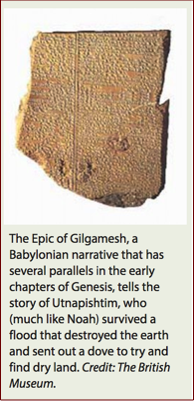



Handling of the Ten Comandments
Rossellli Cosimo
The Raiders of the Lost Ark
Indiana Jones

The Sermon of the Mount
Rossellli Cosimo




No animal is more frequently used in the Bible than the dove or turtle-dove. It's almost impossible to describe them all. I will try to offer you a few examples and their spiritual meaning in the bible.
The dove as the harbinger of peace to Noah (Genesis 8:8, 12) The new promised country is found, to start a new life
The turtle-dove is a bird of passage. It appears in Judea early in the spring, when the leaves are coming out, the flowers opening, and everything looking lovely and beautiful. This will explain some verses in the Song of Solomon, "Rise up, my love, my fair one, and come away, forlo ! the winter is past, the rain is over and gone; the flowers appear on the earth; the time of the singing of birds is come, and the voice of the turtle (or turtle-dove) is heard in our land." It remains until summer is gone; and then flies away to a warmer climate to spend the winter. It is in reference to this that David says, "Oh ! that I had wings like a dove ! for then would I flee away, and be at rest; lo, then would I wander far off, and remain in the wilderness; I would hasten my escape from the windy storm and tempest." You will find these beautiful verses in the Psalm 55:6,7.
Symbolize a Christian: Matt 10:16 be as harmful as doves ...
The dove was placed on the standards of the Assyrians and Babylonians in honor, it is supposed, of Semiramis (Jer.25:38; Vulgate, “fierceness of the dove;” compare Jer. 46:16; 50:16). Here the doves are holding up a Victory crown with the inscription P and X; Chi-Ro: the first two letter in Greek of Christos.
Next to the three boys in the furnace in the position of the Orante: eternal peace, heaven, the promised country is found. Daniel 3: 13,48-52
Doves and turtle-doves were the only birds that could be offered in sacrifice, as they were clean according to the Mosaic law (Ge. 15:9; Leviticus 5:7; 12:6; Luke 2:24 Song of Songs 2:14; Jer. 48:28; Isa. 60:8)
It is often mentioned as the emblem of purity (Psalms 68:13).
The dove is a symbol of the Holy Spirit (Genesis 1:2; Matt. 3:16; Mark 1:10; Luke 3:22; John 1:32); also of tender and devoted affection (Song of Songs 1:15; 2:http:14).
The Song of Songs
1:15 -How beautiful you are, my beloved,
how beautiful you are! Your eyes are doves.
2: 14 'My dove, hiding in the clefts of the rock, in the coverts of the cliff, show me your face, let me hear your voice; for your voice is sweet and your face is lovely.'
more about the enduring symbolism of dove you can find here by Dorythy Willette

The main course in the roman time, or primae mensai varied both in the number and elaboration of dishes. Roast and boiled meat, poultry, game or other meat delicacies would be served. No dish was complete without its highly flavoured and seasoned sauce. Contrary to present day preference, the main object seemed to be to disguise the natural taste of food - possibly to conceal doubtful freshness, possibly to demonstrate the variety of costly spices available to the host. Sometimes so many ingredients were used in a sauce it was impossible to single out any one flavour. One Roman cook bitterly complained that some of his fellow cooks 'When they season their dinners they don't use condiments for seasoning, but screech owls, which eat out the intestines of the guests alive'. Apicius wrote at the end of one of his recipes for a particularly flavoursome sauce, 'No one at table will know what he is eating'. These sauces were usually thickened with wheat flour or crumbled pastry. Honey was often incorporated into a 'sweet-sour' dish or sauce.
A tip for cooking your birds of Apicius: His cookbook is peppered with sage advice, including "Keep vegetables bright green by boiling with cooking soda" and "To prevent birds from going bad it is advisable to boil them (for a while) with their feathers on." H.V. Morton said he loves Apicius' matter-of-fact writing, which translates into a sense of humor today. A recipe for flamingo instructs cooks to pluck the bird, wash and truss it, add water, dill and a little vinegar to the saucepan, cook it with a bouquet of leek and coriander and later, season it with pepper, caraway, coriander, roots, mint, vinegar and dates.
Apicius nonchalantly adds: "The same recipe can also be used for parrot."I don't think it is wise to follow his suggestion!!! MEA ANDREWS of the Missoulian

Many more animals in the same stone ......





1.Jonah & the Whale
2. Snails
3.Lizard
4. Crab
6. Goose

5. Fish

This beautiful tomb gives us an enourmous amount of biblical animals. Lets try to discover their meaning. Helpfull was the website with Christian symbols. All the animals were found in the section of what happened after the flood and Noah
1. Jonah & the Whale: This image needs more than just a line, and therefore I will describe it later.
2. Snails: 1. Because the snail takes everything it needs with it, it symbolizes contentment and being frugal. 2. Because the snail crawls from place to place,its lowly movement symbolizes humility. 3. The slow movement of the snail symbolizes perseverance. 4. In ancient portrayals of the crucifixion, a snail is sometimes seen to the right of the cross. This symbolizes the repentant thief who waited until the very last minute to turn his life over to Jesus. 5. Each spring the snail breaks out of the doorway of its shell. This symbolizes the Resurrection, the first Christians put snails in the tomb as symbol of the immortality of the soul
3. (A) Lizard: The lizard symbolizes the power of the Bible, God’s Word. The Bestiaries suggest that when a lizard is old and blind it points its head toward the rising sun and its sight is fully restored. Or is it a ...
3. (B) Salamander: According to the Bestiaries, the salamander is a cold animal that cannot be harmed by fire. If it is put into a pot of boiling water, the water immediately becomes cold. The salamander became a symbol of the Christian who, by grace, resists temptation.
4. Crab: (and other crustaceans) cannot grow in a linear fashion like most animals. Because they have a hard outer shell (the exoskeleton) that does not grow, they must shed their shells, a process called molting. Just as we outgrow our clothing, crabs outgrow their shells. In the same way, Noah found a new life after the flood. But mostly the Crab in the Old Testament is seen as something negative. It is considered as unclean food: “These you may eat, of all that are in the waters. Everything in the waters that has fins and scales, whether in the seas or in the rivers, you may eat. But anything in the seas or the rivers that has not fins and scales, of the swarming creatures in the waters and of the living creatures that are in the waters, is detestable to you. You shall regard them as detestable; you shall not eat any of their flesh, and you shall detest their carcasses. Everything in the waters that has not fins and scales is detestable to you". Leviticus 11:9-12
CRAB MENTALITY VS GOD MENTALITY
1. Crab Mentality: Motivated by selfish ambition.
God Mentality: “Do nothing out of selfish ambition or vain conceit, but in humility consider others better than yourselves”
2. Crab Mentality: Damaging other people’s reputation.
God Mentality:“Consider others better than yourself” (Philippians 2:3b).
3. Crab Mentality: Born out of envy and jealousy.
God Mentality:“Each of you should look not only to your own interests, but also to theinterests of others” (Philippians 2:4).
Noah, a rightful man was choosen by God, but after being saved, he finished by indulging himself, and created (after the first creation of Adam and Eve) again disorder through his drunkness ... as is dipicted beautiful in the vault of the Sistine Chapel by Michelangelo.
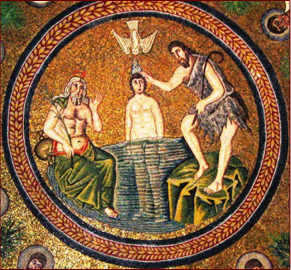
Ravenna, arian baptistery: the Baptism by Saint John, and on the other side the River God of the Jordan with two crab horns.
There is a very strange mosaic in the Arian Church Santa Maria in Cosmedin in Ravenna. On the left we have the River god of the Jordan .... with two horns as crab claws! The church was built at the end of the 5th century by the Arian Ostrogoth king Theodoric. The river Jordan is is dressed as a classical roman god naked to the waste. The most astonishing feature are the crab-claws on his head that forms a diadem and a marsh plant serves as his scepter. On his left a water vessels pours water in the Jordan. A pagan god in a christian representation?
It was in Bethany, beyond the Jordan, that Jesus was baptized. Bethany or Bethabara, mentioned by Eusebius, Jerome and others.
I always loved Hebrew: Bethabara: the house of a new beginning. The of the real meanings is: "to be created of something new". And that was the place of the baptism of Jesus: where salt water reaches clear water and fish find a living. (look my article about the baptism of Christ in the Sistine Chapel)
In a similar way, Noah starts a new creation after the floods. Just like the crab sheds every year her shells, the molting. It is a new start. The river god Jordan is there as an awareness of divine events. Just like the shell of the crab: every year is a new beginning.
Time for our third cooking-class
We moderns are just as “extravagant” (if not more) in the use of sauces and condiments—Apician sauces, too! Our Worcestershire, catsup, chili, chutney, walnut catsup, A I, Harvey’s, Punch, Soyer’s, Escoffier’s, Oscar’s (every culinary coryphee endeavors to create one)—our mustards and condiments in their different forms, if not actually dating back to Apicius, are, at least lineal descendants from ancient prototypes.
Romans ate lobster, crab, octopus, squid, cuttlefish, mullet, sea urchins, scallops, clams, mussels, sea snails, tuna, sea bream, sea bass and scorpion fish. They liked to cook fish live at the table and the Senate once debated the proper way to serve the first turbot. Hadrian was fond of salmon rolled with caviar. Fresh oysters were very popular. They were brought to Rome from Breton by runners in around 24 hours.
UT PISCES FRICTI DIU DURENT
How to keep fried fish?
Immediately after they are fried pour hot vinegar over them !
Indeed, That's what we are doing when we eating fish and chips...
CUMINATUM IN OSTREA ET CONCHYLIA
Cumin sauce for shellfish
Pepper, lovage, parsley, dry mint, malabar leaves, quite some cumin, honey, vinegar and broth.

A nice modern crabsalad: don't forget the dressing of Apicius on it !! ... and leave out the mayonnaise.
5. Fish: The most used image for the early christians
One of the very early Christian symbols was the fish. In ancient Greek they used the word (Ιχθυs)(ichthus). And the word is an acrostic: each letter represents an other word, and so the word fish in Greek became an expression of the early creed.
I - (i) – ησουs (Iasous) – Jesus
χ - (ch) – χριστοs (Christos) – Christ
θ - (th) – θεουs (Theos) – God’s
υ - (u) – υιοs (Uios) – Son
s - (s) – σοταρ (Sotar) – Savior
So, at the end we got: Jesus Christ, Son of God, Savior! It was a way in the times of the persecutions to know where the agapè would take place. If a fish was hanging outside the door, the followers of the Way would known that Christians were living there and that they were celebrating the Eucharist.


Time for our fourthhttp://factsanddetails.com/world/cat56/sub369/item2071.html cooking-class
The Romans made popular fish soup in huge vats. The upper classes ate peppered fish. The Romans were so fond of fish they badly overfished the Mediterranean. The Romans practiced fish farming and raised eels in tanks. Pliny described one aristocrat who occasionally fed his slaves to the eels.
The best Roman cookbooks required pepper for nearly every recipe. Pliny believed that pepper was a stimulant. In the first century A.D, the satirist Persius wrote:
"The greed merchants, led by lucre, run to the parch'd Indies and the rising sun; From thence hot Pepper and Drugs they bear, Bart'ring for Spices their Italian ware ..."
Salt was very valuable to the ancients. Both the Greeks and Romans salted their sacrificial animals before their throats were cut. The Roman empire's major highway was the Via Salaria (Salt Road), on which salt was carried from the salt pans of Ostia to Rome. The expression "worth their salt" comes from Rome where soldiers were paid a salarium (salary) to buy salt.
During the reign of Cæsar and Augustus severe laws were passed, fixing the sums to be spent for public and private dinners and specifying the edibles to be consumed. These laws classified gastronomic functions with an ingenious eye for system, professing all the time to protect the public’s morals and health; but they were primarily designed to replenish the ever-vanishing contents of [25] the Imperial exchequer and to provide soft jobs for hordes of enforcers. The amounts allowed to be spent for various social functions were so ridiculously small in our own modern estimation that we may well wonder how a Roman host could have ever made a decent showing at a banquet. However, he and the cooks managed somehow. Imperial spies and informers were omnipresent. The market places were policed, the purchases by prospective hosts carefully noted, dealers selling supplies and cooks (the more skillful kind usually) hired for the occasion were bribed to reveal the “menu.” Dining room windows had to be located conveniently to allow free inspection from the street of the dainties served; the passing Imperial food inspector did not like to intrude upon the sanctity of the host’s home. The pitiable host of those days, his unenviable guests and the bewildered cooks, however, contrived and conspired somehow to get up a banquet that was a trifle better than a Chicago quick lunch.
Difficile est satyram non scribere! To make a long story short: The Roman host just broke the law, that’s all. Indeed, those who made the laws were first to break them. The minions, appointed to uphold the law, were easily accounted for. Any food inspector too arduous in the pursuit of his duty was disposed of by dispatching him to the rear entrance of the festive hall, and was delivered to the tender care of the chief cook.


2nd C ad mosaic from Pompeii showing wide variety of seafood: eel, octopus
Time for our fifth cooking-class
Marcus Gabius Apicus, the rich first century Roman gourmet, merchant and cookbook writer, reportedly invented foie gras and made "green cheesecake" using lettuce.
His recipe for roast duck and hazelnuts and other fowl goes:
1) mix pepper, parsley, lovage, dried mint, safflower, and moisten with wine;
2) add roasted hazelnuts or almonds, a little honey;
3) blend with wine and vinegar and fish sauce;
4) add oil to the mixture in the saucepan;
5) heat, stir with fresh celery and calamint;
6) make incisions [in the birds] and pour the sauce over them."

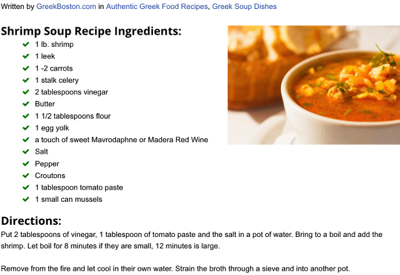
5. Goose: more about birds in the bible you can find here.
1. The goose symbolizes providence and vigilance.
2. The Bestiaries tell us that geese have an excellent sense of smell. They can smell a person better than any other animal. This symbolizes a wise person discerning the good or bad reputation of another person.
3. As the cackling of a goose is a warning of strangers this can be interpreted as warning the community of disruption by the wicked.
4. Those in front rotate their leadership. When one lead goose gets tired, it changes places with one in the wing of the V-formation and another flies point.
5. By flying as they do, the members of the flock create an upward air current for one another. Each flap of the wings literally creates an uplift for the bird immediately following. One author states that by flying in a V-formation, the whole flock gets 71 percent greater flying range than if each goose flew on its own.
6. When one goose gets sick or wounded, two fall out of formation with it and follow it down to help and protect it. They stay with the struggler until it’s able to fly again: mercy of God.
7. The geese in the rear of the formation are the ones who do the honking. I suppose it’s their way of announcing that they’re following and that all is well. For sure, the repeated honks encourage those in front to stay at it.
Sometimes it would be nice if people behaved like geese. The world would be much better off.





Were the early christians magicians?
In the artworks of the Pio Christian Museum we can see from were is coming the connotation that the followers of Jesus were seen as magicians, miracle workers. In the wall stones of the early Christian burial places, the catacombs, we see how Moses with a stick is taking water from the rocks in the desert and the faithful drinking it. Similar, with a stick the multiplication of bread or the resurrection of Lazarus.
That stick is still in use and we call it today the wand of Merlin or Harry Potter.

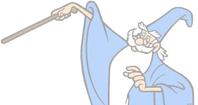
And more, if you ever go to a synagoge, you will see that the rabbi, the teacher, held in his hands a stick. At the end we have the form of a little hand. It is the Yad : יַד , a Jewish ritual pointer, popularly known as a Torah pointer, used by the reader to follow the text during the Torah reading from the parchment Torah scrolls. In Hebrew, every letter is a letter, a number and a word. The Yad is the letter J for John, it is the number 10 (commandments to follow) and means the hand (of God). It is of course not the teacher who tells you what to do, it is the finger of God. It is not Moses who takes the water from the rocks, but the hand of God; and it is not the Saint that does the miracle, once again, it is the finger of God. Over the years, it became the magic stick, the wand. A saint is only an instrument in the hands of God !
The Yad, as the finger of God, is further used in art in different ways, often in an allegorical way. Here we have a few examples ....
In the abis of the Basilica San Clemente in Rome (and in the Basilica St. John in Lateran too), we have the cross (as the Yad), rooted in acanthus plant (symbol of eternal life, see Deposition of Caravaggio), from which are emerging four little rivers: and in the semi-circle, 12 sheep are drinking from that water. The four rivers is an allegory of the Living Water of the four gospels and the twelve sheep, the apostles or the twelfe tribes of Israel, the whole world.

What happened after the death of Nero ? .....
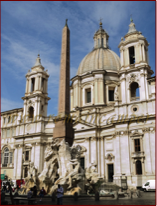
Simular, on the Piazza Navona, we have the obelisque, and underneath the allegory of the four longest rivers: the Nile for Africa, the Rio della Plata for Latin America, the Danube for Europe and the Ganges for Asia.
We are in the time that the Catholic Church regained his spiritual force through missionary after the Council of Trent: De Propaganda fidei !!
Now, from the finger of God (the Yad, the Obelisque), the living water of the four gospels is running to the etch of every continent. the fountain is a water-feature, but has also a very strong theological meaning. We have to spread the Good News !!
The fountain of Bernini was built at the same time that his rival Borromini built the Pontifical Institute of Missionary: De Propaganda Fidei.
A year after Nero's death, in 79 AD, a year of four emperors in a row, a new dynasty is emerging -the Flavi-, having no affiliation with the lobbyist of Nero, the Jewish people. Vespasian send immediately his troops to Judea and his son Titus to suppress the revolt leaded by Herodes Agrippa against Rome for more autonomy, by destroying in 70 AD the second temple of Jerusalem. Josephus Flavius, Jew, friend and writer was present, and told us that the prisoners of war were brought to Rome. The lake of Nero’s golden house was drained and they had to build the Amphitheater of the Flavi’s, the coliseum. And an arch of victory was erected: the arch of Titus.
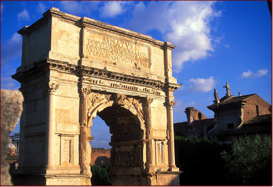


Moses is taking water from the rocks in the desert
Multiplication of bread
The use of the Jad for reading the Torah
Resurection of Lazarus
Walt Disney and Merlin
Harry Potter & his wand


The Story of Jonah and whale, is one of the best know of the Bible. It inspired for generations artists and even the famous Italian fairy-tale of The Adventures of Pinocchio by Carlo Collodi.
But why the early Christians represent the whale as a monster of Loch Ness?
Let start with the book of Jonah: read the story, it's like a fairy tale; the tombstones a cartoon to illustrate it: His story is one of the shortest books in the Bible ....




CHAPTER 1
Jonah rebels from God's mission
1 The word of Yahweh was addressed to Jonah son of Amittai:
2 'Up!' he said, 'Go to Nineveh, the great city, and proclaim to them that their wickedness has forced itself upon me.'
3 Jonah set about running away from Yahweh, and going to Tarshish. He went down to Jaffa and found a ship bound for Tarshish; he paid his fare and boarded it, to go with them to Tarshish, to get away from Yahweh.
4 But Yahweh threw a hurricane at the sea, and there was such a great storm at sea that the ship threatened to break up.
5 The sailors took fright, and each of them called on his own god, and to lighten the ship they threw the cargo overboard. Jonah, however, had gone below, had lain down in the hold and was fast asleep,
6 when the boatswain went up to him and said, 'What do you mean by sleeping? Get up! Call on your god! Perhaps he will spare us a thought and not leave us to die.'
7 Then they said to each other, 'Come on, let us draw lots to find out who is to blame for bringing us this bad luck.' So they cast lots, and the lot pointed to Jonah.
8 Then they said to him, 'Tell us, what is your business? Where do you come from? What is your country? What is your nationality?'
9 He replied, 'I am a Hebrew, and I worship Yahweh, God of Heaven, who made both sea and dry land.'
10 The sailors were seized with terror at this and said, 'Why ever did you do this?' since they knew that he was trying to escape from Yahweh, because he had told them so.
11 They then said, 'What are we to do with you, to make the sea calm down for us?' For the sea was growing rougher and rougher.
12 He replied, 'Take me and throw me into the sea, and then it will calm down for you. I know it is my fault that this great storm has struck you.'
13 The sailors rowed hard in an effort to reach the shore, but in vain, since the sea was growing rougher and rougher.
14 So at last they called on Yahweh and said, 'O, Yahweh, do not let us perish for the sake of this man's life, and do not hold us responsible for causing an innocent man's death; for you, Yahweh, have acted as you saw fit.'
15 And taking hold of Jonah they threw him into the sea; and the sea stopped raging.
16 At this, the men were seized with dread of Yahweh; they offered a sacrifice to Yahweh and made vows to him.
CHAPTER 2
The Prayer of Jonah
1 Now Yahweh ordained that a great fish should swallow Jonah; and Jonah remained in the belly of the fish for three days and three nights.
2 From the belly of the fish, Jonah prayed to Yahweh, his God; he said:
3 Out of my distress I cried to Yahweh and he answered me, from the belly of Sheol I cried out; you heard my voice!
4 For you threw me into the deep, into the heart of the seas, and the floods closed round me. All your waves nd billows passed over me;
5 then I thought, 'I am banished from your sight; how shall I ever see your holy Temple again?'
6 The waters round me rose to my neck, the deep was closing round me, seaweed twining round my head.
7 To the roots of the mountains, I sank into the underworld, and its bars closed round me for ever. But you raised my life from the Pit, Yahweh my God!
8 When my soul was growing ever weaker, Yahweh, I remembered you, and my prayer reached you in your holy Temple.
9 Some abandon their faithful love by worshipping false gods,
10 but I shall sacrifice to you with songs of praise. The vow I have made I shall fulfil! Salvation comes from Yahweh!
11 Yahweh spoke to the fish, which then vomited Jonah onto the dry land.

CHAPTER 3
Jonah Goes to Nineveh
1 The word of Yahweh was addressed to Jonah a second time.
2 'Up!' he said, 'Go to Nineveh, the great city, and preach to it as I shall tell you.'
3 Jonah set out and went to Nineveh in obedience to the word of Yahweh. Now Nineveh was a city great beyond compare; to cross it took three days.
4 Jonah began by going a day's journey into the city and then proclaimed, 'Only forty days more and Nineveh will be overthrown.'
5 And the people of Nineveh believed in God; they proclaimed a fast and put on sackcloth, from the greatest to the least.
6 When the news reached the king of Nineveh, he rose from his throne, took off his robe, put on sackcloth and sat down in ashes.
7 He then had it proclaimed throughout Nineveh, by decree of the king and his nobles, as follows: 'No person or animal, herd or flock, may eat anything; they may not graze, they may not drink any water.
8 All must put on sackcloth and call on God with all their might; and let everyone renounce his evil ways and violent behaviour.
9 Who knows? Perhaps God will change his mind and relent and renounce his burning wrath, so that we shall not perish.'
CHAPTER 4
Resolution
1.This made Jonah very indignant; he fell into a rage.
2 He prayed to Yahweh and said, 'Please, Yahweh, isn't this what I said would happen when I was still in my own country? That was why I first tried to flee to Tarshish, since I knew you were a tender, compassionate God, slow to anger, rich in faithful love, who relents about inflicting disaster.
3 So now, Yahweh, please take my life, for I might as well be dead as go on living.'
4 Yahweh replied, 'Are you right to be angry?'
5 Jonah then left the city and sat down to the east of the city. There he made himself a shelter and sat under it in the shade, to see what would happen to the city.
6 Yahweh God then ordained that a castor-oil plant should grow up over Jonah to give shade for his head and soothe his ill-humour; Jonah was delighted with the castor-oil plant.
7 But at dawn the next day, God ordained that a worm should attack the castor-oil plant -- and it withered.
8 Next, when the sun rose, God ordained that there should be a scorching east wind; the sun beat down so hard on Jonah's head that he was overcome and begged for death, saying, 'I might as well be dead as go on living.'
9 God said to Jonah, 'Are you right to be angry about the castor-oil plant?' He replied, 'I have every right to be angry, mortally angry!'
10 Yahweh replied, 'You are concerned for the castor-oil plant which has not cost you any effort and which you did not grow, which came up in a night and has perished in a night.
11 So why should I not be concerned for Nineveh, the great city, in which there are more than a hundred and twenty thousand people who cannot tell their right hand from their left, to say nothing of all the animals?'
The Biblical gourd or castor oil tree is a symbol of compassion. Compassion means a sympathetic awareness of another person’s distress together with a desire to alleviate the distress. In the story of Jonah, we see compassion juxtaposition with lack of compassion.
God had compassion on the Ninevehites and sent Jonah to call them to repentance. Jonah had no compassion for the 120,000 Ninevehites who repented of their sins. God had compassion on Jonah and caused a leafy gourd to grow over Jonah’s shelter. Jonah had compassion on the gourd that protected him from the sun; he was angry when a worm chewed through the vine and caused it to die.
Possibly some of Jonah’s lack of compassion for the Ninevehites was the result of seeing God as belonging to the Israelites. He did not fully comprehend that God was the God of the world and cared about all peoples to include the Ninevehites (Psalm 145:9). Throughout the book of Jonah, God leads Jonah to a new understanding of God himself. We never read that God was angry with the sulky Jonah. Instead God gave patient explanations using Jonah’s feelings for the gourd vine to parallel God’s feelings for the Ninevehites.
The story of Jonah is a prefiguration of Jesus, who died and was swallowed by the earth, and then the Resurrection on the third day.
This will become later the battle between saint Peter and Paul: is the messiah message only for the Israelites or also for the Gentiles.
The Idea of the Lords compassion in Psalm 145:9 convinced even saint Peter.
9 Yahweh is generous to all, his tenderness embraces all his creatures.
10 All your creatures shall thank you, Yahweh, and your faithful shall bless you.

Chapter 1. The Sailors threw Jonah into the sea, a big fish took him
Chapter 2. Jahweh spoke to the fish, which then vomited Jonah onto the dry land
Chapter 4. Jonah was delighted with the castor oil plant giving him shade
Castor oil plant, grows upon 15 ft a year, large leaves.

All of us are still remaining a bit puzzled about the representation of the whale. Doesn't he look more like a monster of Loch Ness? Actually, in the Old testament is not written a whale but Leviathan = big fish. A very extensive article was written by Scott B. Noegel, University of Washington, even it is not easy to read with all the Hebrew references.
The Bible Encyclopedia describes it as follow: The Leviathan is a transliterated Hebrew word (livyathan), meaning “twisted,” “coiled” a sea monster. The “leviathan” the Bible talks about in Job 41 is described as the greatest creature in the sea. Jon 2:1 simply labels it a ולֹדָג ּגָד” ּlarge fish,” but the context suggests something much larger. Unlike a crocodile or fish, it was useless to try to catch a leviathan with hooks, harpoons or anything else. “Nothing on Earth is his equal—a creature without fear” (Job 41:33, NIV).
What was a leviathan? The large size, strong jaws, great teeth, fast swimming ability and its protected back and underside all give clues. It could have been a Kronosaurus (pronounced: KRON-oh-SOR-us) or something like it. This was one of the greatest, most overwhelming animals ever to swim the seas. It was not a true dinosaur, but it was reptile-like and had great, sharp teeth.
It seems these animals were still alive at the time of King David. Psalm 104 says they played where the ships go to and fro. This was probably the Mediterranean Sea.
The leviathan symbolizes Satan and destruction. It is spoken of as a sea monster in Psalm 104:25-26. In Isaiah 27:1 the leviathan is given the characteristics of the serpent (Satan) and is sought out to be punished by God. The devil is none other than Leviathan. In Western Christianity, beginning already in the 3rd century CE, one finds paintings, sarcophagi, and other funerary art that link Jonah to Leviathan by depicting the “fish” as fantastic sea monster with large sharp teeth, tall ears, mammalian forearms, and a long serpentine tail
Leviathan can be symbolic of the whale that swallowed Jonah, but due to the leviathan being depicted with sharp teeth and dragging people into the depths, this is a poor interpretation of the symbol.
And then there is still the story of Carlo Collodi: The Adventures of Pinocchio.
That the story was so successful is because we can all recognize ourselves in it and the story of Jonah and the whale is in the collective memory of human mankind.
Disobedience and deceit by Pinocchio. Just like Jonah: When the Lord asked him to covert Ninive and preaching, he disobeyed and took a cruise.
The time (3 days) in the stomach of the whale made him to repent his actions.
The whole story of Jonah and the whale is becoming a prefiguration of Jesus, who was for three days in the grave, and than resurrected. But dying for Jesus, Son of God, was an act of obedience !!
In the Sistine Chapel, one of the most prominent figure in the vault above the altar is the story of Jonah and the whale. He represents Jonah in the same position as he was there (as you can see in a fragment of his poetry at the conclusion of the vault in 1512) for over four years.
But is the story of Michelangelo not the same of Jonah? Jonah disobeyed the Lord, just like Michelangelo refused to paint the Sistine Chapel, saying that he was not a painter, but a sculptor and architect.
After repentance, Jonah obeyed the Lord and managed through his preaching to convert the whole city of Ninive. He superseded himself.
A bit similar to Michelangelo who finally obeyed pope Julius II, and painted the vault of the Sistine Chapel, it gave him the fame as one of the greatest artists of all times.
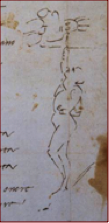
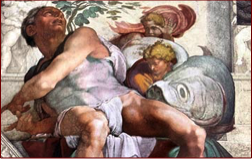
Walking on in the Pio Christian Museum ....
... In the roof you find often a hole. Maybe for the chimney? No, not at all. Early Christians had the tradition to go and visit the beloved one who died on their Dies Natalis.
The next tomb where I want to stop is a bit curious. As in many other sarcophagus, the lit or cover looks like the roof of. a house.
This is all logical when we go to the etymology of the word cemetery: "graveyard, burial place," late 14c., from Old French cimetière "graveyard" (12c.), from Late Latin coemeterium, from Greek koimeterion "sleeping place, dormitory," from koiman "to put to sleep," keimai "I lie down," from PIE root *kei- (1) "to lie," also forming words for "bed, couch."
Early Christian writers were the first to use it for "burial ground," though the Greek word also had been anciently used in reference to the sleep of death. In Middle English simeterie, cymytory, cimitere, etc.; forms with cem- are from late 15c.
And indeed, if koimeterion means a sleeping place, a dormitory, the early Christians believed that they would sleep until the end of time, when there would be the resurrection. In a similar way, when pope Francis showed for the first time the box with the remains of saint Peter to the public in 2013, he hold in his hand a box that looked like a house.
The reason is quite simple: most people are sleeping under their roof: and there is often a remarkable future on the top of it ....

The representations in the tombstones and sarcophagus are changing dramatically after the edict of Milan in 313, when the emperor Constantine recognized Christianity among the other religions. From now on, there is no fear anymore to represent Jesus, His work and miracles directly.
Where before the accent laid more on old testament stories, as prefigurations of Jesus, now they are adding also more direct references to the life of Jesus and His works. We find also more prophetical images: prefigurations of Christ. Also curious is that in the early tombs we don't find Adam and Eve. Notice also that all the figures have a book-roll in their hands. The Church became official and the Magisterium has to be followed.
I am originated in the Flanders Fields, and we have the tradition that on November 2nd, the families are going to the graveyards and cemeteries, visiting the tombs of the beloved ones who died. After that, we have a party at home !! a feast !!
Even in the small villages in the Flanders' Fields, we have an even more strange tradition. I still recollect the premature death of my father when he was only 46 yrs old, as veterinary leaving behind his wife and five children. The whole family and the village of farmers were in distress for this premature lost. But after the funeral there was a banquet, and among those who were present, one had a little roll, something similar as for making receipts in the supermarket, with the key-words for telling jokes.
The spirits offered, together with his presence, made that after a few hours everybody was in a good mood and laughing. I and my brothers and sister were shocked ! But looking at it today (2017), 38 yrs later, I begin to understand it. My father was born in paradise, something to celebrate !!
There are documents of the early Christians how they left the catacombs totally drunk; it seems that some of them had also a good party !!!
And the little hole in the roof you may ask? Well, very simple, it was to provide the sleeping man his share of the spirits !! Proosst ! or as we are saying in Italian: Cin ! Cin ! Remember that also Pharao's were buried with an amount of food that they would need in the afterlife !

Just like you walk down a few steps, on the left is an other sarcophagus that intrigued me. The one with the ribbons. On the left ànd the right are represented by a man ... but if you look closely, you will discover that it was altered over the history, because the marble has a different color.
And indeed, this tomb was originally a pagan tomb: the ribbons. In the ancient mythology, after dying you would have to cross a river, the Styx or the Hades. Those ribbons are representing the waves of the river. Altering a few elements in the two figures made a Christian tomb of it.

Further in the gallery, on the left, an other beautiful stone. Jesus is coming in triumph in Jerusalem on Palm Sunday Matt. 21:1-11
"Say to the daughter of Zion: Look, your king is approaching, humble and riding on a donkey and on a colt, the foal of a beast of burden."
Jesus is also very simply dressed: in the right corner on the top, we see Nicodemus hiding himself in the fig-tree.
In the days of those kings, the God of heaven will set up a kingdom which will never be destroyed, and this kingdom will not pass into the hands of another race: it will shatter and absorb all the previous kingdoms and itself last for ever- Daniel 2:44

But from here onwards, the themes and the representation of the figures is changing.
Most of the tombs coming up are made after the Edict of Milan in 313, when the Emperor Constantine approved Christianity among the other religions. He also moved the capital of the Empire from Rome to Constantinople, a city he built for himself.
From that day, the pope took the role of the emperor. We still call him in Italian: Il Papa: a contraction of two words: Pater Patriae: the Father of the Fatherland.... and also the honor title of the emperor since August. From now onwards, Jesus is not anymore a simple good shepard, but the King of Heaven, ruling over his (spiritual) empire.
And a King sitting on a donkey ???? No, it would look like the president drives a Fiat 500 of the seventies. From now he will do what his status requires: doing like an emperor and using four horses for his entrance in Jerusalem. The temporal power made that popes became more and more involved in material causes. The Church took the business over !!
Sarcophagus approx 310 AD
Sarcophagus after 360 AD: Jesus with four horses just as ...

.... the Emperor Titus comes in triomph in the city after the desctruction of the temple of Jerusalem in 70 AD
For a long period after their settlement in Canaan the Israelites made no use of horses, according to the prohibition, Deuteronomy 17:16. David was the first to form a force of cavalry (2 Samuel 8:4). But Solomon, from his connection with Egypt, greatly multiplied their number (1 Kings 4:26; 10:26, 29). After this, horses were freely used in Israel (1 Kings 22:4; 2 Kings 3:7; 9:21, 33; 11:16).
The furniture of the horse consisted simply of a bridle (Isaiah 30:28) and a curb (Psalms 32:9).
1. The horse is connected with lust based on Jeremiah 5:8.
2. “The horse is sometimes regarded as an emblem of courage and generosity. In the Roman catacombs it ordinarily denotes the swiftness of life. Sometimes the palm branch of victory is placed over its head.”
3. When used in the catacombs, the words “in peace” are printed under the palm.
4. The horse is sometimes seen depicted with a saint. In each instance the horse is involved in the saints death. Thus, the horse represents martyrdom in these instances.
5. A horse symbolizes a Christian. When portrayed, the horse will have a Chi Rho on its hindquarters.
Horses are always referred to in the Bible in connection with warlike operations, except Isaiah 28:28. The war-horse is described in Job 39:http://www.catholic.org/bible/book.php?id=22&bible_chapter=3919-25.
9. Rejoice heart and soul, daughter of Zion! Shout for joy, daughter of Jerusalem! Look, your king is approaching, he is vindicated and victorious, humble and riding on a donkey, on a colt, the foal of a donkey.
10. He will banish chariots from Ephraim and horses from Jerusalem; the bow of war will be banished. He will proclaim peace to the nations, his empire will stretch from sea to sea, from the River to the limits of the earth.


Translated, Dies Natalis means your Birthday. And indeed, for Christians, dying means to get born in Heaven. That is also the reason that we celebrate the feast of a Saint not on the day of his physical birth, but the day he died. (There were some problems with the feast of saint Theresa of Avila, because she died in the days that were cut off when Pope Gregory applied his Gregorian Calendar.)
In the year 380, Pope Damaso decided that Latin had to become the official language of the Catholic Church. Christianity became the official religion of the Roman Empire.
From that day the rudimentary inscriptions on the tombstones are far more clear to read by the use of Capital letters, perfectly lined up: earlier tombs had often their inscriptions in Greek, the language of the Gospels.

Jesus enters Jerusalem in triomph as a King ruling over Heaven & Earth ...
Example of tomb of the early christian or Hebrew era in Greek: this one with the Menorah; as you can notice, the characters are still irregular
Typical writing in this tombstone before Pope Damasus (380), but after Constantine (313): the letters are composed irregulary but already all in Latin.

Just like you walk a few steps down, on your left hand side is a beautiful tomb. In front Jesus sits on a throne, surrounded by the apostles ... a scene we have seen before. But the interesting part is the left and the right side of it. One side shows you Jesus is warning Peter about his upcoming betrayal, three times and then the cock will crowing.
What is fascinating is the back-scene with a roman city. (on both sides !) Nearby is also a beautiful mosaic: all the mosaics in the Pio Christian museum are facsimiles of those in the central nave of the Basilica Santa Maria Maggiore. Dating 5th century AD. Unfortunately, in the Basilica they are so high up, over the arches in the nave on the left and the right under the windows, that it is often difficult to see them in detail. Here at least we can see them from close by.
The Pio Christian Museum is offering you the perfect replica's. And in one of those, close to this tomb, we have again a Roman city.
If you would go today to one of the renaissance cities of Italy like Florence, Sienna or Luca or one of the many others in Italy, this is the kind of architecture that you will encounter. With the patronage of the family the Medici in Florence we got the revival of ancient knowledge.
And in the renaissance the copied the antics as much as they could do. We have seen already how the cooking book with recipes of Aspicius became famous again, and also in the architecture they copied the Romans.








The healing of the paraliticus, and the wedding of Canaa and the encounter with the Samaritan
As youwill notice, they have all a bookroll in their hands
The resurrection of Lazarus and the Samaritan and the healing of the blind: miracles are done with the Wand (of Harry Potter?) or with the finger of God. Saints aren't doing miracles, they are only instruments in the hand of God ! The biggest conversion is of course the spiritual one, when someone is touched by the hand of God.
Those stones could be the first marketing for IKEA: don't they tell you that you can lift your bed on your shoulder ???



During your lecture, maybe you want to hear some music ? I choose the Gregorian Chants, the music of the early Church. But instead of male voices, I choose the Benedictine nuns of Saint Celilia's.
Click on it for listening.


It is curious, that in all the tombstones and sarcophagus we find Moses, such a prominent figure in the Bible, only back when he knocks the water from the rocks in the desert. Otherwise he never appears.
In the iconography of the catacombs other stories are told (especially in those under my house on the via Latina: the Ipogeo of Via Dino Compagni (look the link for their astonishing images). That ipogeo is called the Sistine Chapel of the middle of the 4th Century.







In Rome, one of the famous architects of the renaissance was Donato Bramante, the man who got the first commission for building a new Basilica st. Peter. Among his renaissance buildings we have his famous tempietto on the spot where is said that saint Peter died (interesting is that after the enormous fire in London, architects made an enlarged copy of it that became the Saint Paul's Cathedral in London (but now we are in the time of neo-classicism). An other beautiful building of Bramante is the Chiostro del Bramante.
Also Michelangelo was a renaissance man: as architect he made the famous Palazzo Farnese and towards the end of his life the palace and square on the Capitol hill. Looking at palazzo Farnese and seeing the decoration of the sarcophagus, you would not imagine that there was a distance of more than a thousand year between them !
Time for our sixt cooking-class
Marcus Gabius Apicius, the rich first century Roman gourmet, merchant and cookbook writer, reportedly invented foie gras and made "green cheesecake" using lettuce.
His recipe for roast duck and hazelnuts and other fowl goes:
1) mix pepper, parsley, lovage, dried mint, safflower, and moisten with wine;
2) add roasted hazelnuts or almonds, a little honey;
3) blend with wine and vinegar and fish sauce;
4) add oil to the mixture in the saucepan;
5) heat, stir with fresh celery and calamint;
6) make incisions [in the birds] and pour the sauce over them."

For the early Christians, the cocq is the symbol of Christ: the bird of the Light. We find it often in the shape of oillamps in Greece and Rome. The bird of the resurection and symbol of the intellect coming from God.

























Peter Betrayed the Lord three times
Jesus on Throne
Jesus brought to Pontius Pilatus
The Sacrifice of Isaac


Barnabas or Jesus ?
Adam & Eve
Jesus in Jerusalem & Nicodemus
Daniel between the lions
And so, we are coming back to the entrance of this astonishing beautiful gallery: the Pio Christian Museum of the Vatican. Our itinerary is coming to an end .... and we coming to the birth of Jesus: the nativity stories.
Ipogeo Dino Compagni, click on the image for much, much more ...
It's from the first halve of the 4th century (+/- 330 AD)
Half of the family was still pagan, the other halve was already hristian .... images of Hercules, School of Medicines, and stories of old and new Testament.
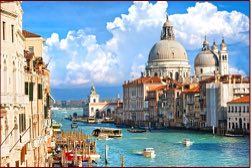
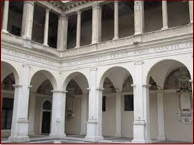
Mosaic Santa Maria Maggiore - Facsimil in Pio Christian Museum, Vatican; 5th Century
Jesus is warning Peter forseeing his betrayal
Chiostro del Bramante, Roma 1504
Venice
Michelangelo, Palazzo Farnese, Roma, 1530

A very rare image is Jesus with the Cross. Early Christians used other symbols, like the monogram of Jesus: Chi - Ro in Greek: the first letters of Christos, or an anchor, or a fish as is described before.
And indeed, Why you should use a cross as symbol? A cross, and instrument of torture !!



It is considered that one of the first time in the Christian iconography we see the cross, is on a door of the church of Santa Sabina on the Aventine Hill in Rome made in 430-432 AD. It is a representation of Christ's crucifixion. It was only after the victory, of Constantine against his rival Maxentius on October 28, 308 AD, , using the symbol of the cross ... as we can see in the Rooms of Raphael in the Museums.
In one of the legends, he got the vision of the Cross, with the message of an upcoming victory in that sign. From that moment, the cross is becoming slowly the symbol for the Christians.

Detail of the wooden door of the Basilica Santa Sabina, Roma
AD 430-432 approx.
A horse for my kingdom ?? or a donkey ?!
Rooms of Raphael, the vision of Constantine



Washing of the feet
Daniel & the lions, in early Christian tombs (left)
Daniel & the lions, in a tomb after Constantine: now dressed as the prophet (right)

Pontius Pilatus is washing his hands

1. The Sacrifice of Isaac: What the Lord didn't ask Abraham to do, He asked His own Son: the sacrifice of Jesus on the cross. Look at the intervention of the Lord's hand.
Among the old testament Stories that we see as well in the early era as well after Costantine are:

2. Moses takes water from the rocks; a prefiguration how Jesus will become the living water that gives eternal life.

Stories, not seen before, that are appearing after Costantine.
1. Now, often we see now also the story of Adam and Eve and the sin fall. Jesus, as the new Adam will take away the sin of the first man. Genesis 3
2. An other is is the three boys in the furnace: Hananiah, Mishael and Azariah, where the Lord is saving those who glorify Him and those who turn their head away from idolatry. Daniel 2:19-49
3. Daniel between the lions: The Prophecies of the Kingdom of Heaven: Paradise ... In the days of those kings, the God of heaven will set up a kingdom which will never be destroyed, and this kingdom will not pass into the hands of another race: it will shatter and absorb all the previous kingdoms and itself last for ever- Daniel 2:44 and Daniel 6:17.
The passion of Jesus




Below: Typical Renaissance cities & buildings: copying the Romans ... A re-birth of ancient civilization.

The regular characters are appearing after Pope Damaso, 380 AD.
This tombstone is possible of a fossari, the undertakers who made the catacombs: see the tools !
The "Orante"
A symbol that is coming back from the very beginning is the Orante, the person with the lifted hands. "Orare" is the Latin verb for "To pray". It represents the person who is already in the beatitude of Heaven ... the same gesture a priest is doing when during the Holly Mess he is saying: "Let us pray", an invocation for God's blessing.








St. Bonaventure (d. 1274) in his Life of St. Francis of Assisi tells the story the best:

Time for our second cooking-class
Seneca and Martial tell it (both with different tendencies) and Suidas, Albino and other writers repeat it without critical analysis. These writers who are unreliable in culinary matters anyway, claim that Apicius spent one hundred million sestertii on his appetite—in gulam. Finally when the hour of accounting came he found that there were only ten million sestertii left, so he concluded that life was not worth living if his gastronomic ideas could no longer be carried out in the accustomed and approved style, and he took poison at a banquet especially arranged for the occasion.
Time for or last cooking-class
This sausage was brought back to Rome by soldiers who had served in Lucania, located in the heel of southern Italy, probably around 200 B.C. Peppery, spicy, smoked sausages are still made in many parts of the world, from Palestine to Brazil, under names that can be traced back to Lucania. In Brazil, for example, these types of sausage are today called linguica.
Ancient Roman Lucanian Sausage Recipe
Pepper is ground with cumin, savory, rue, parsley, condiments, bay berries, and garum. Finely ground meat is mixed in, then ground again together with the other ground ingredients. Mix with garum, peppercorns, and plenty of fat, and pine nuts; fill a casing stretched extremely thin, and thus it is hung in smoke.


Bucolic scenes of prefiguration of paradise
Detail of the Geographic Maps in the Vatican: the region Lucania
The lady on the left has the famous sausages of Lucania in her hands



History tells us that Saint Francis was the first to create the nativity scene and the Christmas Creche or Crib.
In the year 1223, St. Francis, a deacon, was visiting the town of Grecio to celebrate Christmas. Grecio was a small town built on a mountainside overlooking a beautiful valley. The people had cultivated the fertile area with vineyards. St. Francis realized that the chapel of the Franciscan hermitage would be too small to hold the congregation for Midnight Mass. So he found a niche in the rock near the town square and set up the altar. However, this Midnight Mass would be very special, unlike any other Midnight Mass.
It happened in the third year before his death, that in order to excite the inhabitants of Grecio to commemorate the nativity of the Infant Jesus with great devotion, [St. Francis] determined to keep it with all possible solemnity; and lest he should be accused of lightness or novelty, he asked and obtained the permission of the sovereign Pontiff. Then he prepared a manger, and brought hay, and an ox and an ass to the place appointed. The brethren were summoned, the people ran together, the forest resounded with their voices, and that venerable night was made glorious by many and brilliant lights and sonorous psalms of praise. The man of God [St. Francis] stood before the manger, full of devotion and piety, bathed in tears and radiant with joy; the Holy Gospel was chanted by Francis, the Levite of Christ. Then he preached to the people around the nativity of the poor King; and being unable to utter His name for the tenderness of His love, He called Him the Babe of Bethlehem. A certain valiant and veracious soldier, Master John of Grecio, who, for the love of Christ, had left the warfare of this world, and become a dear friend of this holy man, affirmed that he beheld an Infant marvellously beautiful, sleeping in the manger, Whom the blessed Father Francis embraced with both his arms, as if he would awake Him from sleep. This vision of the devout soldier is credible, not only by reason of the sanctity of him that saw it, but by reason of the miracles which afterwards confirmed its truth. For example of Francis, if it be considered by the world, is doubtless sufficient to excite all hearts which are negligent in the faith of Christ; and the hay of that manger, being preserved by the people, miraculously cured all diseases of cattle, and many other pestilences; God thus in all things glorifying his servant, and witnessing to the great efficacy of his holy prayers by manifest prodigies and miracles.
In the same tomb: on the top ... Jesus as the new Adam .... in the bottom: The three Kings, following the star of Bethlehem finding the new born King.
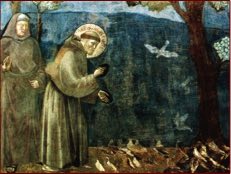
But as we clearly can see in the above tombstones, the whole tradition of making the Christmas Creche is much older and goes back to the early Christians. The raffiguration is going back to the apocryphal gospels, those not recognized as authentic parts of the bible by the catholic Church. But nonetheless, all those stories about the infancy of Jesus and his family, helped the faithful. It showed them that God was incarnated in an ordinary family like yours and mine.

Saint Francis, depicted by Giotto
The scene, first assembled by St. Francis of Assisi in 1223, is iconographic, meaning its various elements are intended primarily to depict theological—not historical, nor even literary—truths. It harmonizes two very distinct stories: Luke’s birth of Jesus in a stable, visited by shepherds, and attended by an angelic host and Matthew’s Magi (Matt 2:1-12), who are led by a star to the home of Jesus’ family sometime before Jesus’ second birthday.
The apocryphal accounts agree with Luke 2:8-20 that the shepherds visited the Holy Family shortly after Jesus’ birth. In the Western texts, the family then moves from the cave to a stable and places the baby in a manger. There an ox and an ass bend their knees and worship him, fulfilling the prophecy of Isaiah 1:3, “The ox knows it owner, and the donkey its master’s crib” (see Pseudo-Matthew 14 and Birth of the Savior 86). Though an apocryphal embellishment, the animals became a common ingredient in subsequent depictions of the nativity and may be observable in nativity scenes today.
1. “The ox was emblematic of patience and strength, and in the writings of some of the early Fathers it is accepted as a symbol of Christ the true sacrifice;
2. of prophets, apostles and saints slain for the sake of Christ; and in the
3. of all who patiently bear the yoke, and labor in silence for the good of others.”
4. If the ox has wings, it is the symbol of St. Luke. 3.
5. If the ox is pictured with the donkey, it is most likely in the nativity scene. This is either going for historical accuracy or could be symbolic that all animals paid their respects to God who had come to earth as a child.
The camel symbolizes temperance because of the long length of time a camel can go without water.
The hair of the camel is a symbol of John the Baptist, who wore camel hair while preaching in the desert (Matthew 3:4).
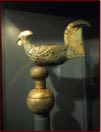
The cocq of Ramperto - Brescia of the year 820
The rooster is a symbol of faith and vigilance. "The Gospel story has provided the key to connecting the rooster as a solar symbol of health [of the Hellenic people] and the rooster as a sapiential symbol of anticipation and wisdom [of the Celts]. The roaring song that announces dawn reawakens in Peter the consciousness numbed by fear, which led him to deny Jesus. In him the light dawn of faith straight and invincible has been born in him since then: the sun of the divine light that leads to salvation and makes him part of the resurrection. For this reason the rooster, who associates with Peter, but also with the awakening of the dead on the day of Judgment, dominates (with the cross) the bell towers of the Christian churches "(F. Cardini, Places of Infinity , November 2004).
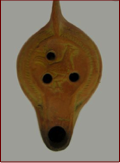

And so, we are coming to the end of one of the most beautiful and fascinating galleries in the Vatican Museums.
I really hope you enjoyed the lecture and maybe, one day, try a recipe of Appicius.
Giovanni Battista de Rosi, archeologue
How the position of women changed ....
1 Now it happened that after this he made his way through towns and villages preaching and proclaiming the good news of the kingdom of God. With him went the Twelve,
2 as well as certain women who had been cured of evil spirits and ailments: Mary surnamed the Magdalene, from whom seven demons had gone out,
3 Joanna the wife of Herod's steward Chuza, Susanna, and many others who provided for them out of their own resources.
5 Terrified, the women bowed their heads to the ground. But the two said to them, 'Why look among the dead for someone who is alive?
6 He is not here; he has risen. Remember what he told you when he was still in Galilee:
7 that the Son of man was destined to be handed over into the power of sinful men and be crucified, and rise again on the third day.'
8 And they remembered his words.
9 And they returned from the tomb and told all this to the Eleven and to all the others.
10 The women were Mary of Magdala, Joanna, and Mary the mother of James. And the other women with them also told the apostles,
11 but this story of theirs seemed pure nonsense, and they did not believe them.
Even some magic words are rooted in Christianity: Hocus Pocus. In the medieval, when most people were illiterate and the priest was celebrating the eucharist facing the wall ... and pronounced the words spoken by Jesus at the Last Supper: Hoc est enim corpus meum; this is My Body ...
Bread became the body of Christ! The faithful, listening from a far distant only heard: Hocus Pocus !
1. The donkey (also called colt or ass) symbolizes fulfillment of prophecy. This is found in several events in the Bible. The most memorable instance is Jesus riding into Jerusalem on a donkey (Luke 19:28-40) as prophesied by Zechariah (Zechariah 9:9). Another instance is the donkey that talked to Balaam (Numbers 22:22-35).
2. The donkey symbolizes defilement.
3. If the donkey is pictured with the ox, it is most likely in the nativity scene. This is either for historical accuracy or could be symbolic that all animals paid their respects to God who had come to earth as a child.
The ass (or donkey) is an animal frequently mentioned throughout Scripture. Of the domesticated species we read of:
The she donkey (Hebrew: 'athon), so named from its slowness (Genesis 12:16; 45:23; Numbers 22:23; 1 Samuel 9:3).
The male donkey (Hebrew: Hamor), the common working ass of Western Asia, so called from its red color.
Issachar is compared to a strong donkey (Genesis 49:14).
It was forbidden to yoke together a donkey and an ox in the plough (Deuteronomy 22:10).
The donkey’s colt (Hebrew: 'air), mentioned Judges 10:4; 12:14. It is rendered “foal” in Genesis 32:15; 49:11. (Compare Job 11:12; Isaiah 30:6.)
The donkey is listed as an unclean animal, because it does not chew the cud (Leviticus 11:26. Compare 2 Kings 6:25).
Asses constituted a considerable portion of wealth in ancient times (Genesis 12:16; 30:43; 1 Chronicles 27:30; Job 1:3; 42:12). They were noted for their spirit and their attachment to their master (Isaiah 1:3).
They are frequently spoken of as having been ridden upon, as by Abraham (Genesis 22:3), Balaam (Numbers 22:21), the disobedient prophet (1 Kings 13:23), the family of Abdon the judge, seventy in number (Judges 12:14), Zipporah (Exodus 4:20), the Shunammite (1 Samuel 25:30), etc.
Zechariah (9:9) predicted our Lord’s triumphal entrance into Jerusalem, “riding upon an ass, and upon a colt,” etc. (Matthew 21:5)
